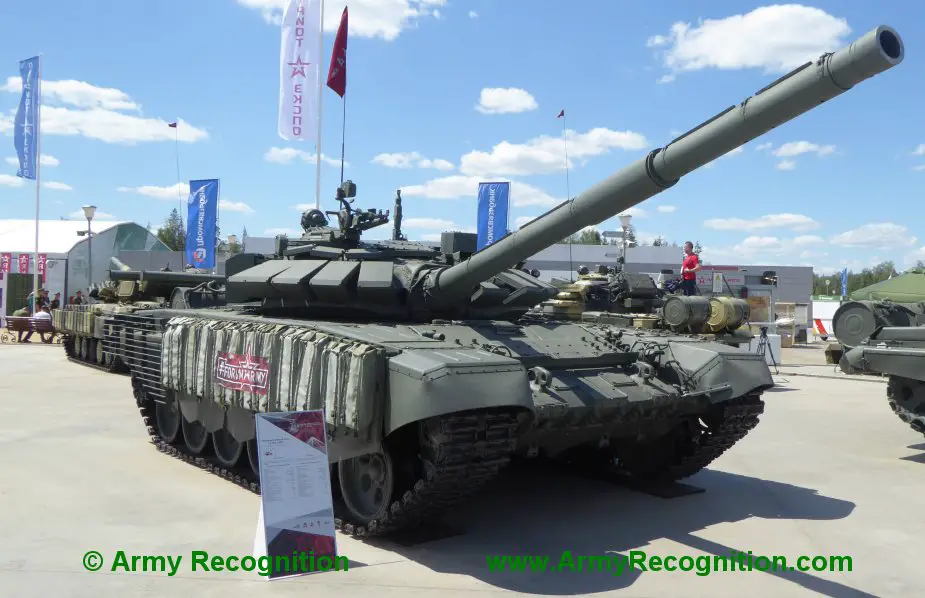Breaking news
Russia to procure armor-piercing sub-caliber shells in 2020.
The Russian Defense Ministry will begin procuring Lekalo 3BM44 armor-piercing sub-caliber shells in 2020. The troops will receive 2,000 of them by the end of the year. The shells will destroy modern armor at a distance of 3-5 kilometers, the Izvestia daily writes.

T-90A MBT. The sub-caliber munitions are designed for the guns of the D-81 family. They are carried by all Russian tanks: T-72 of various modifications, T-80 and T-90. (Picture source: Army Recognition)
Several Defense Ministry sources told the newspaper that the procurement will last several years. The exact parameters of the deal are not disclosed. It is known that the ministry plans to procure several thousand Lekalo for new tanks and for storage stocks.
The Bakhirev Institute is the lead designer. It drafted the first contract with related companies for the final assembly of 2,000 Lekalo (the Izvestia obtained the document). It says the munitions are designed for the guns of the D-81 family. They are carried by all Russian tanks: T-72 of various modifications, T-80 and T-90. The cost of the contract is 51.5 mln rubles. The supplies are to be completed by August 30, 2020.
Western countries have been making their tank armor thicker since 1990s. The upgrade has intensified since the engagement in Middle East conflicts. Foreign hardware obtained additional armor and dynamic armor. It became more resistant to guided antitank missiles and cumulative charges. It is more difficult to defend against sub-caliber shells.
Lekalo is fit for any 125mm gun of all available tanks. It has no competitors among available projectiles, expert Alexey Khlopotov said. "The Mango predecessor pierced 520 mm armor from a distance of 2 km. Lekalo pierces 650 mm. It is enough to destroy US M1A2 Abrams of modern modification," he said.
All modern sub-caliber shells have a similar design, expert Valery Mukhin said. It is a fin-stabilized metallic rod flying at a speed of 1,500m/sec and more. The shell and armor is deformed by the hit. They acquire liquid qualities and the shell operates as a cumulative charge. It "washes out" the armor, like a flow of water washes out the sand. But it remains integral and does not collapse at the exit. White-hot metal debris fly in the resulting channel and destroy the equipment, weapons and the crew. Inflammable substances catch fire.
"There are four main parameters that can change and increase the effectiveness of a sub-caliber shell. They are the departure speed, elongation (length-diameter ratio), weight and density", Mukhin said.
Lekalo improved characteristics against Mango due to the high-durability plug made of tungsten alloy. 3BM44 uses a longer and more powerful gunpowder charge 4Zh63 and an upgraded plug that provide advantages against the predecessor.
Uralvagonzavod Corporation earlier said a family of new shells, including a powerful armor-piercing charge, was created for Armata tanks. However, the projectile is unfit for available tanks because of the big size. Lekalo is necessary to increase the firepower of the main tank fleet of the country.
T-90, T-80 and T-72 will fire new shells. Upgraded T-72B3 will receive T-90 gun and loading mechanism. The change will make them fit for engaging longer armor-piercing shells and enjoy a major advantage over previous tanks.
The Russian army is currently armed with several types of armor-piercing shells. Soviet-designed sub-caliber fin-stabilized Mango 3BM42 is most widely used. It was the most effective before Lekalo appeared. Mango belongs to the second-generation of projectiles, the Izvestia said.
© Copyright 2020 TASS / Army Recognition Group SPRL. All rights reserved. This material may not be published, broadcast, rewritten or redistributed.




























